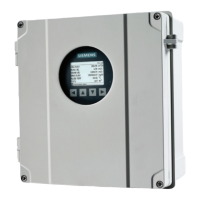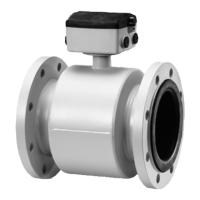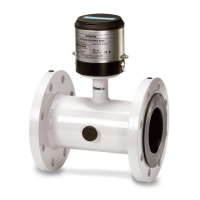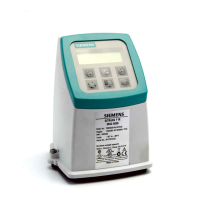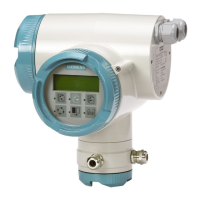2.4.1 IO Card Common Features
Available IO Boards
The newest version of IO board communicates over the I
2
C bus. The I
2
C IO boards are the
type available for new installation.
● Analog IO board (AIO_I2C, Part Number A5E02486267001): has 8 analog output channels,
8 analog input channels, and 2 digital input channels
● Digital IO board (DIO_I2C, Part Number A5E02486268001): has 8 digital outputs and 6
digital inputs
● Analog and Digital IO board (ADIO_I2C, Part Number A5E02359491001): has 4 digital
outputs, 4 digital inputs, 4 analog outputs, and 4 analog inputs
The DOs are rated for 1A resistive load. Inductive loads are different. A DO should not drive
an inductive load greater than 0.5A. An example is the typical block-and-bleed application
which uses two parallel solenoids at 0.4A each. Separate DOs should be used to drive each
solenoid. Each DO connected to a solenoid should have a diode to suppress the solenoid load.
The analyzer supports optional ESBF and ANCB and up to two I
2
C IO boards. These boards
provide approximately twice the number of circuits as previous CAN IO boards. However, if
an application needs more than two IO boards, a NAU can be installed. This allows installation
of additional I
2
C IO boards that the Maxum II can access remotely.
I
2
C Bus Connections and Addressing
There are two standard I
2
C bus connections on the top of each I
2
C IO board. Either of these
connections may be used as either a bus input or bus extension connection. In this manner
the I
2
C bus can daisy chain from one board to another or to other I
2
C devices.
The I
2
C IO boards use an 8-bit board identification number as an address on the I
2
C bus. The
address is a hex number from 00 to FF, corresponding to a decimal number from 0 to 255.
Address numbers from 1 to 254 are used (numbers 0 and 255 are reserved).
DIP switches are used to set the address for the physical board as shown below. When
replacing a board, the user only needs to set the switches on the new board to match the old
board being replaced.
The DIP switches used to set the address are on the top back part of the board and are labeled
BOARD ID. Together, the DIP switches correspond to an 8 bit binary number that is set to
match the board address. Each switch is labeled for the binary digit it represents, and setting
a switch is equivalent to setting that bit to 1. For example, if the switches for 1, 2, and 4 are
set, then the board ID would be 1+2+4 = 7.
Electronic Compartment Component Descriptions and Maintenance Procedures
2.4 Analog and Digital IO
Maxum II Reference Manual
Manual, 7/2017, 2000596-001 55

